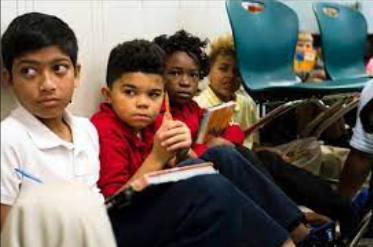Morgan Hanna
According to CNN, the United States has had at least 77 school shootings as of early December 2023, accumulating over thirty deaths of students from kindergarten through college . Throughout the years, Congress has discussed a plethora of ways to protect our students from these attacks, including increased police presence in and around schools, shooting simulations to train teachers, stricter gun rights for owners and purchasers, arming teachers with their own firearms, etc. While these options are praised by diverse media, they ignore the fact that such laws aren’t always the best decision for our children’s protection, considering these measures take time to be implemented, and in the meantime, students continue to face the risk of gun violence. Until concrete decisions are made to confidently protect our students from school shootings, here is what schools and students should know to stay safe in such events:
Educate Yourself About School Shootings
It is likely that in the past few years, you have heard about a school shooting that took place somewhere in the country. It is important that these events continue to be covered by news sites throughout the country, no matter the general public’s views of shootings. Even if you live in a state where shootings are rare,you should research past shootings and familiarize yourself with current laws in your district or state. The response to shootings may vary from state to state.
Class Discussions About Shootings
In the aftermath of a shooting in national or local coverage, your teachers or fellow students may discuss the recent event, and this is a good thing. Teachers should educate their students on the potential threat and explain the effects of a shooting, whether it happened in another school or their own. While school is often designed to be a safe space for students, students need to learn about the dangers of the world that may affect them. This is not just the case for school shootings, but also in cases of gang violence, terrorism, etc.
Know What to Do
School districts will have different drills and suggested actions in the event of a school shooting. Some may be more effective than others, but no matter how your school takes action,you must always do what you need to survive, including but not limited to:
Knowing where school exits are located
Knowing where to hide in a classroom or the hall
Knowing how to tend to inflicted wounds
Deciding if it is safe to progress to the nearest exit
Calling 9-11 immediately if it is safe to do so (describe the situation, yourself, the shooter(s), and the description of the shooter(s))
Locating items or areas that can be used as weapons if fighting is the last resort
Keeping calm and quiet through the entire event
Even with advanced preparation and education on school shootings, there is still the rare chance that you and your school may be the target of an attack, and sometimes, the best defense is your words. When I say that words may be your best defense, I am not implying you speak to the perpetrator of a shooting that is happening at that moment. Your words can be one of the most protective measures before a shooting occurs. Don’t be afraid to discuss topics of school shootings with your friends, family, or teachers. If you see or know someone who has mentioned being the perpetrator of a school shooting, maybe via messages or jokes, report the knowledge to a teacher, counselor, supervisor, etc. It is always important to know the signs of a potentially dangerous person. Don’t be afraid to ‘snitch’ on someone if they are threatening the safety of others. You could be saving lives with your voice and observations.

